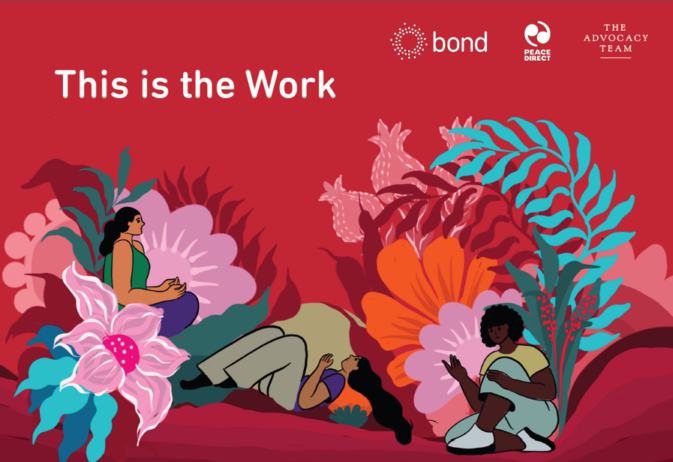How the Summit of the Future can unlock youth power
Young people are not a minority.
Half the world is under the age of 30 and more than a quarter are under the age of 18. And the demographics are changing. Already the youngest continent, UN forecasts suggest that by 2050, at least one-third of all 15-24 year-olds will be African.
Given these statistics, it’s about time that young people feature prominently in global discussions focused on their futures.
When I started at Restless Development, I was still (just about) considered a young person and was regularly frustrated by what felt like an odd tendency to perceive young people as an add-on, or a nice-to-have. Eight years on and I’m still baffled when I hear about side events at big summits that are set up for young people to have conversations while the big decisions are being made by policy-makers elsewhere.
Likewise, the well-meaning initiatives that aim to engage young people but fall at the first hurdle, either due to a reliance on the English language, a lack of funding to support young people to engage (a lot of young people are studying, working and bringing up families as well as working on your project and they deserve to be reimbursed for their time and expertise) or an emphasis on the ‘Usual Suspects’; a network of familiar faces, many of whom can overcome the aforementioned challenges.
I’m not going to make the case for meaningful youth engagement here, why it’s important or even how to do it. It’s been said many times over the years and a quick search will likely turn up hundreds of versions of the same argument. A good place to start is Restless Development’s Power-Shifting Checklist and Youth Power Principles, both of which outline how we work with young people.
Instead, I want to talk about the Summit of the Future.
Proposed by the UN Secretary-General in Our Common Agenda report, the Summit of the Future exists to reinvigorate efforts to reach existing commitments – such as the Global Goals – and to respond to emerging challenges. Scheduled for September, and with negotiations well underway to determine the final Pact for the Future and its annexes on a Global Digital Compact and a Declaration on Future Generations, the Summit is shaping up to be an important moment for young people.
Youth and Future Generations are a focus of one of the five chapters of the Pact, with extensive consultation underway to understand what outcomes young people want to see from the process. Released last month, the Zero Draft of the Pact for the Future begins to set out how to breathe new life into the multilateral system, building cooperation for a more secure future, and impetus to address some of the biggest challenges the international community faces as we teeter on the edge of polycrisis.
Restless Development sees the Zero Draft as an encouraging start as we head towards September’s Summit. But it’s not time to set off the glitter cannons yet. Much more is needed to strengthen the Pact and, consequently, outcomes for young people wherever they are:
Working with young people needs to be a partnership
Currently, the Pact notes the “important contributions” of young people in tackling the world’s biggest challenges. This feels incredibly passive. Young people are leading the way on every SDG issue, whether that’s supporting other farmers to adapt to the changing climate in Tanzania or advocating for – and securing – much-needed maternal health services in Zambia.
It’s not on young people to resolve the multiple crises the global community finds itself in, but their leadership is an important part of the solution. With so many youth-led organisations and youth experts within civil society, why not meaningfully partner with young people to ensure that the aims of the Pact are realised?
Young people are not a homogenous group
It is infuriating how often “young people” get used to capturing a whole generation of individuals, who are just that: individuals. As with all global issues, what is relevant in one location won’t be in another. Asking the question and engaging a wide range of people is how smart policies can be devised, something that the School of International Futures knows well.
One more time for those at the back: ask young people what they want
At Restless Development, we know that youth organisations are clear about their needs, but are rarely asked (at least if the wide range of inaccessible donor calls and practices out there are anything to go by). As part of the State of Youth Civil Society 2023, Restless Development has asked young feminists this question, and they were not slow in responding.
Creating flexible funding mechanisms focused on youth movements like those suggested in the Pact is exciting news. But for these to succeed and to be worth this important investment, young people must be involved from the very start.
Accountability, accountability, accountability
Including a call for states to set up national youth consultative bodies with a mandate to engage in national policy-making is very welcome, as is the call for a new monitoring and reporting mechanism. But Restless Development wants stronger emphasis on realising youth engagement, which is crucial to the success of the Pact.
Encouraging Member States to engage youth is not enough. New, inclusive structures for young people must be fully resourced and regular reporting must be defined and mandatory, with young people actively involved in every delegation that reports.
There is so much promise in the Summit of the Future. For our sector, it will likely be all anyone will talk about during the summer months and into the autumn. But in those discussions, we need to remember that half the world is under 30. Young people are neither a minority nor a homogenous group. Ask them what they want and work with them to achieve it.




